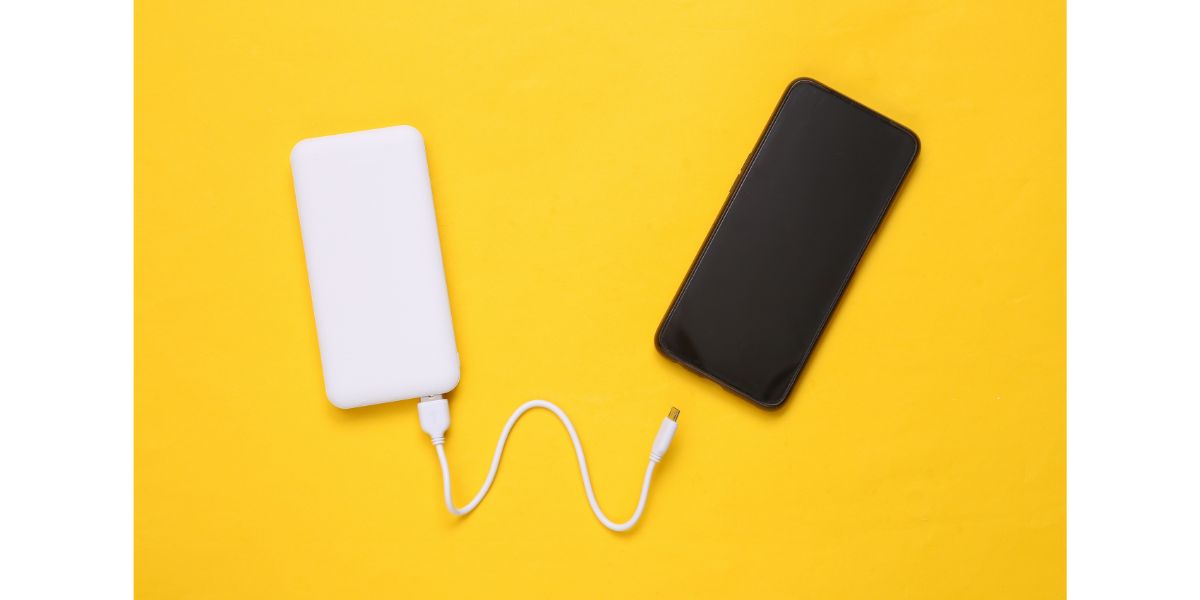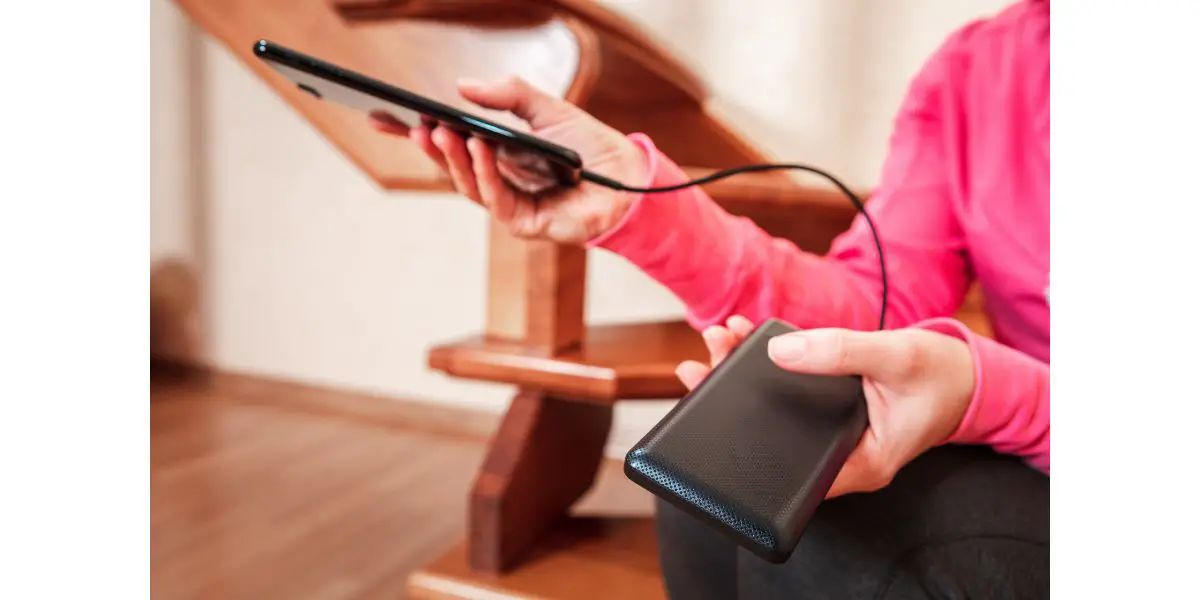Disclaimer: This post may contain affiliate links, meaning we get a small commission if you make a purchase through our links, at no cost to you. For more information, please visit our Disclaimer Page.
Portable devices now come in different types or categories. That includes smartphones, tablets, laptops, fitness bands, and smartwatches.These are just a few of them. And all of them need batteries to become functional.
Batteries have come a long way in terms of their overall capacities. They can carry on a single charge and power our favorite devices.Technology companies now manufacture battery packs you can take with you anywhere.
These battery packs are portable units with large capacities. Their main purpose is to keep a reserve of energy handy when the other batteries get too low. You use them when you are far from the main power source and need to charge. But since they are also batteries, power banks also need.
Table of Contents
Why Is My Battery Pack Not Charging My Phone?
Most power banks do not require an initial setup. You can plug any device in immediately.
However, there may be rare instances where they cannot charge your phone. If this happens, you may need to replace your charging unit. However, there are a few things that you can troubleshoot before you decide it is time to spend more money.
1. Activating the Battery
Many power banks will charge your device as soon as you plug it in. A LED indicator will tell you whether or not it is charging.
Your phone screen will also flash if it is charging. If you cannot see that the bank is charging your phone’s battery, you may have a different power pack.
Some power banks need activating before they charge a device. For these units, you need to turn on a power button so they start charging.
That button might be in the same row where the LED lights are. Whatever the case, you can check the make and model of your power bank to see if it is one of this type.
When a battery pack like this one finishes charging the phone, a relay inside it will turn it off again. You need to remove your phone, or your phone will drain. If you want to charge your device more, turn the power bank on.
2. A Bad Cable or Connection
If your battery pack is not working, this is a good place to look for errors in the process.
Check the connectors at both ends of the cable for any signs of damage. Minor damage might prevent it from getting a tight fit inside the ports.
You should also check if the cable has severe bends or cracks that might interfere with energy flow. If you still can’t get it to work, you may need to try a different cable. If a different cable works, you know that you need to replace your previous one.
3. Power Bank Input Issues
The power bank itself might be experiencing a problem. If you have any other similar chargers, you can try one of them to see if your phone will charge from them.
It shows that the previous bank might have a problem if it does. Check if there are any obstructions to the ports.
Dust and debris might prevent it from making a secure connection to the device you want to charge. Otherwise, your first step should be to check if the battery pack is at zero and in need of charging.
4. Phone Input Problems
Because your phone might have its issues, it is a good idea to rule it out as a culprit. To do this, check its ports for debris that might interfere with the charging cable connector.
If everything seems clear, try charging the phone with its adapter or a different power pack. If these things do not work, you may need to troubleshoot your phone instead of the battery pack.
Why Is My Power Bank Charging My Phone So Slowly?
Like a power bank that won’t charge a phone, connection issues can cause the accessory to work Review some of the troubleshooting methods discussed in the earlier section.
Check the ports on either device, cable issues, and signs of damage on the power pack itself.
Power banks are useful for keeping phones charged up, but they can sometimes do so. This could be true even if your pack and device both support fast charging.
If you believe your power back is far too slow in charging, there are a few things to check to get to the bottom of the issue.
1. Battery Capacity
This point could apply to both the power pack and the phone itself. Many power banks and smartphones have large capacities to handle several charges.
If you have a phone with a high-capacity battery, it also takes a long time to charge it up to its full capacity.
This isn’t a problem; your phone should last long on one full cycle.
2. Low Amperage
Your phone needs a minimum power level to charge. Not every battery pack can work with every phone.
Some older packs might not be able to send enough power to some phone models.
If this happens, the low amperage means the phone takes much longer than it should power up fully. To avoid this, make sure that any power pack you buy can deliver the levels your phone needs.
3. Power Pack Age
Like any battery, a power bank has a capacity that it starts with when it is new. Over time, this accessory will go through many charging cycles. Along with this, the components inside the bank will age. Thus, as the battery pack ages, its charge ceiling will lower.
4. Connection Problems
Connection issues can cause the accessory to work. Check the ports on either device, cable issues, and signs of damage on the power pack itself.
What Can Make a Power Bank Stop Working?
Power banks are relatively simple accessories. If yours isn’t working, you can treat it the same way you would any battery. A few major things can cause a battery to stop working.
1. As a power bank ages, its charge ceiling may be at zero or nearly zero.
2. Exposing power banks to extreme temperature for extended periods could mess up the battery.
Extreme cold could lead to moisture buildup inside the battery pack. If you use it like this before letting it warm up, it could damage the unit. Similarly, extreme heat could burn the components inside the case. It could swell and crack the power pack.
3. Ports can wear out over time with alot of plugging or unplugging.
Are Power Banks Worth Repairing?
The answer to this question is up to the individual reader. However, we can offer some guidelines here.
Most of the time, you can get high-capacity power banks that cost less. Depending on your power pack, it may make more sense to save time and get a new one.
Furthermore, some power banks do not open. If you can’t see a way to open your accessory, it may be best to replace it.
When Should I Replace My Power Bank?
Most power bank manufacturers build their devices to last a few years. An average power pack could last at least 5 years.
Some may last much longer than this, but the overall capacity they can hold will decrease over time. If your power bank can only hold about 25 percent of its full capacity, it’s time to replace it.
Conclusion
Battery packs keep our devices going far longer than they could. They consist of the main battery packs and charging circuits. And most of them can charge several devices before running out of energy.
If you have issues with your power bank, you can check some of our troubleshooting tips here. We advise buying a pack from a reputable brand. But like other batteries, they will lose some charge over time.


